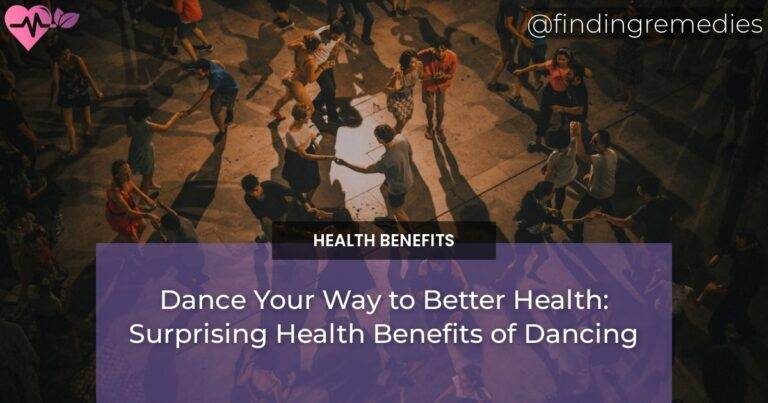Dancing is a form of physical activity that can have numerous benefits for health and well-being. In addition to its cardiovascular benefits, dancing offers a unique combination of physical, mental, and social benefits. From improving cognitive function and reducing stress to promoting self-expression and creativity, dancing offers a wide range of advantages that make it an excellent addition to any healthy lifestyle.
Table of Contents
The Benefit of Dance
The Caloric Expenditure of Dance
Dancing is a great way to burn calories and lose weight. Depending on the form of dance and the intensity of the activity, dancing can burn anywhere from 200 to 500 calories per hour. This makes dancing an excellent option for individuals who are looking to lose weight or maintain a healthy body weight.
ALSO READ
The Role of Dance in your Lifestyle
Dancing is not just a physical activity; it can also have a positive impact on overall health and well-being. Incorporating dance into your lifestylecan help to improve energy levels, reduce stress, and promote positive emotions. In addition, dancing can also help to promote social interaction and self-expression, which can have additional benefits for mental health and well-being.
Release of Hormones and Their Effects on Health
Endorphins and Their Role in Pain Management
Dancing can trigger the release of endorphins, which are natural compounds that can help to reduce pain and promote positive emotions. Endorphins are often referred to as the body’s natural painkillers, and can help to reduce the symptoms of conditions such as arthritis, fibromyalgia, and chronic pain.
ALSO READ
Dopamine and Its Impact on Mood and Motivation
Dancing can also trigger the release of dopamine, which is a neurotransmitter that plays a key role in mood and motivation. Dopamine is often referred to as the feel-good chemical and can help to improve mood, increase motivation, and promote feelings of happiness and pleasure.
Serotonin and Its Influence on Memory and Learning
Dancing can also trigger the release of serotonin, which is a neurotransmitter that plays a key role in memory and learning. Serotonin is often referred to as the learning chemical and can help to improve cognitive function, enhance memory, and promote learning and development.
Healing and Preventing Diseases Through Dance
The Effects of Dance on Cognitive Function in Older Adults
Research has shown that dancing can have a positive impact on cognitive function in older adults. Dancing can help to improve memory, reduce the risk of dementia, and promote overall brain health and well-being.
The Benefits of Dance for Parkinson’s Disease Patients
Dancing can also have benefits for individuals with Parkinson’s disease. Dancing can help to improve balance, coordination, and flexibility, and can also help to reduce symptoms such as stiffness and tremors.
The Role of Dance in Reducing Cardiovascular Risk Factors
Dancing is also an excellent cardiovascular exercise, which can help to reduce the risk of heart disease and other cardiovascular conditions. Dancing can help to improve heart health, reduce blood pressure, and promote overall cardiovascular fitness and well-being.
Risk Factors
The Physical Risks of Dance and How to Avoid Them
Like any physical activity, dancing can come with certain risks. It is important to take steps to avoid injury and ensure that you are practicing safe dance techniques. Some of the physical risks of dance include muscle strains, sprains, and other injuries.
The Importance of Proper Dance Footwear
Proper dance footwear is essential for preventing injuries and promoting optimal performance. It is important to choose shoes that are appropriate for the type of dance you are practicing and that fit properly.
The Effects of Heat and Humidity on Dance Performance
Heat and humidity can also have an impact on dance performance. It is important to take steps to stay cool and hydrated during dance practice and performances to prevent heat-related illnesses and ensure optimal performance.
The Advantages and Disadvantages of Different Dance Forms
The Health Benefits of Ballroom Dancing
- Improves body coordination
- Promotes social interaction
- Promotes self-expression
- Reduces stress
The Physical Demands of Hip-Hop Dance
- Improves cardiovascular fitness
- Builds strength and endurance
- Improves flexibility and balance
- Promotes creativity and self-expression
The Mental Stimulation of Contemporary Dance
- Improves cognitive function
- Reduces stress and anxiety
- Promotes self-expression and creativity
- Improves self-esteem and confidence
Are the Health Benefits of Dancing Comparable to those of Exercise in Nutrition?
Dancing offers a wide range of health benefits similar to those of exercise in nutrition. Both activities can improve cardiovascular health, build strength and endurance, and promote overall well-being. The health benefits of exercise, including increased flexibility and reduced stress, can also be achieved through regular dancing.
Can Cycling Provide Similar Health Benefits to Dancing?
Both cycling and dancing offer unique benefits for wellness. Cycling has been shown to improve cardiovascular health, strengthen muscles, and increase overall endurance. Similarly, dancing can improve flexibility, balance, and agility. Both activities provide a fun and effective way to stay active and promote overall well-being.
Conclusion
Summary of Key Findings
Overall, dancing offers a wide range of benefits for health and well-being. From improving physical fitness and reducing cardiovascular risk factors to improving cognitive function and promoting self-expression and creativity, dancing is an excellent addition to any healthy lifestyle.
Recommendations for Incorporating Dance into a Healthy Lifestyle
- Choose a form of dance that you enjoy and that fits your fitness level
- Practice safe dance techniques and wear appropriate footwear
- Stay cool and hydrated during dance practice and performances
- Make dance a regular part of your healthy lifestyle

